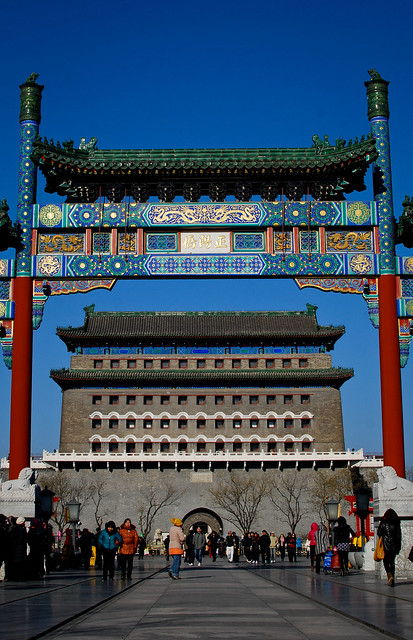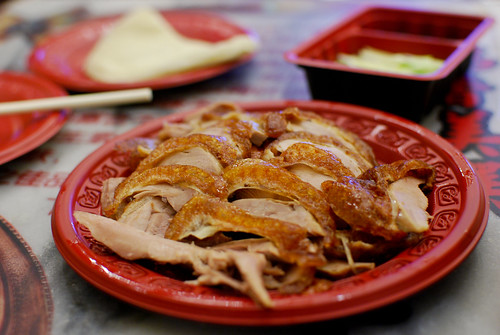
South of Tiananmen Square finds the old Qianmen Gate or Zhengyangmen, guarded by the grey archery tower called Jianlou. It has been converted into a museum now. I entered the gate to escape the freezing December wind, which had already numbed my hands and ears at the square earlier. The warmth inside the gate was such a relief. I'd planned to stay there for as long as I could and so, took time to observe the exhibits displayed at every corner in the museum. On the highest level, a centerpiece depicted the livelihood of the street across the jianlou known as Qianmen Street. For centuries, this street has been a popular choice for the well-heeled to have their photos taken or shop for high quality goods like silk shirts and shoes. Here stood a few legendary restaurants (or lao ji hao) as well, which are still very much in business today. Two of them are Quanjude, a Beijing roast duck restaurant, and Duyichu, specializing in shaomais or steamed dumplings.

Visiting Quanjude is an obligation, applicable to both local and foreign visitors. It is, afterall, one of the oldest and most famous roast duck restaurants in Beijing. I've even seen their vacuum-packed roast duck sold in supermarkets! Quanjude uses the gua lu method of roasting, where the marinated, air-dried ducks are hung and roasted in the oven. Personally, the best part about Quanjude is that they cater for single diners, by offering individual set meals. Although the portions of Beijing duck served are usually small, with the bare meat usually disposed off, I still can't imagine having the skin of a whole duck to myself. The set meal was perfectly sized, complete with warm duck soup served in a styrofoam cup. Unlike the Beijing duck that I'd tried back home, the skin was, though skillfully carved, less moist. Another difference was the thicker flour wrap and paler, in the absence of egg. The condiments included a bundle of scallion and sweet, dense dark sauce.

Duyichu has been making shaomais for almost five centuries now. This steamed dumpling is not my favourite dim sum and honestly, I was here just to have a taste of history. I’d ordered the minced lamb shaomai, as recommended by The Lonely Planet guide. The dumplings, fitted nicely in the bamboo steamer, looked very different from the shaomais that I’d eaten all my life. The usual thin, yellow skin wrap was replaced with a much thicker plain white flour skin, edges skillfully nipped to resemble a blooming flower. It was aesthetically pleasing. The filling was a coarse chop of meat and there was no topping of tobiko or dyed sago. If I were to draw a comparison between the shaomai of the imperial days (well, Duyichu’s version, at least) and now, I’d say that this dim sum has been refined through the years. Personally, I prefer the dumplings of today.

Qianmen Street has reopened a few years ago, after being given a facelift by the authority. Today, it is a major tourist attraction in Beijing. The lao ji haos now share the street with modern cafes and boutiques. Commercialization has returned to the street. I had a good time strolling the busy street, imagining how indifferent this old Peking street would be, back in the 15th century.


3 comments:
Pity the shaomai filling was a tad coarse (by the sounds of it) cos the dumpling itself looks very pretty. :)
Do u mean that the flower blossom siew mai not nice? :P
kenny, yeah, i felt the same way too, dude. perhaps that's how it was made 500 years ago. ;D
choi yen, yupe, their siew mai wasn't to my liking. but very pretty, i must say. :D
Post a Comment